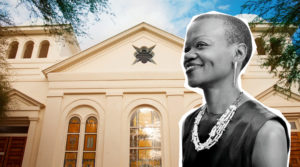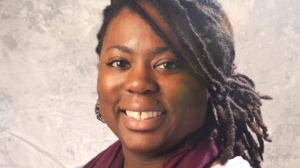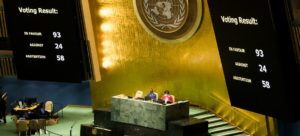Florida’s decision to teach in schools that slavery in this country was of “personal benefit” to some enslaved people is obscene revisionism. It is like teaching that though Abraham Lincoln might have been assassinated, at least the performance at Ford’s Theatre that night was first-rate.
For those who doubt this obscenity is actually in the curriculum, look no further than Page 6 of Florida’s 2023 academic standards for teaching social studies: “Instruction includes how slaves developed skills which, in some instances, could be applied for their personal benefit.”
Florida approves Black history standards decried as ‘step backward’
It was Gov. Ron DeSantis, running for the GOP presidential nomination as an “anti-wokeness” Savonarola, who inspired this latest effort to both-sides slavery. (Months ago, the state rejected an Advanced Placement course on African American studies, saying it “significantly lacks educational value.”) On Friday, DeSantis blamed the state Department of Education — “I wasn’t involved,” he claimed — but also defended the abomination: “They’re probably going to show that some of the folks that eventually parlayed, you know, being a blacksmith into doing things later in life.”
Where to begin? I’ll start with my own family history. One of my great-great-grandfathers, enslaved in Charleston, S.C., was indeed compelled to learn to be a blacksmith. But he had no ability to “parlay” anything, because his time and labor were not his own. They belonged to his enslaver. He belonged to his enslaver.
To pretend my ancestor was done some sort of favor by being taught a trade ignores the reality of race-based, chattel slavery as practiced in the United States. He was sold like a piece of livestock at least twice that I know of. To say he “developed skills,” as if he had signed up for some sort of apprenticeship program, is appallingly ahistorical. As was true for the millions of other enslaved African Americans, anything he achieved was in spite of his bondage.
The Post’s View: DeSantis seeks to whitewash slavery in Florida’s curriculum
What was the reality? In the years right before the Civil War, there was an enterprise in Charleston known as “Ryan’s Mart” — colloquially called “Ryan’s n—– jail.” Occupying the width of an entire block, the premises consisted of an open yard surrounded by four buildings. There was a four-story barracoon, or barracks, where Black men, women and children were housed, usually in chains, pending sale. There was a free-standing kitchen so the merchandise could be fed. There was a small morgue for lost inventory. And in front, where buyers entered, there was an auction gallery where bargains in flesh were consummated.
Only the haunted gallery remains, thought to be the lone surviving building in the state where enslaved people were auctioned. In 1988, the city government acquired the property, eventually opening it to the public as the Old Slave Mart Museum to tell the story of slavery in Charleston. Last month, the new, more comprehensive International African American Museum opened a mile away at the site of Gadsden’s Wharf, where more enslaved Africans were brought ashore than anyplace else in the country.
I have looked through the new Florida curriculum to see whether that sentence about “personal benefit” might be a singular aberration, and it is not. Yes, the standards do require that students be taught about the horrors of slavery. But they also leave some very wrong impressions.
The curriculum mandates that teachers “examine the various duties and trades performed by slaves (e.g., agricultural work, painting, carpentry, tailoring, domestic service, blacksmithing, transportation).” That suggests a smorgasbord of career options, but in fact the vast majority of enslaved African Americans were forced to do backbreaking work as field hands. Very small numbers were employed otherwise.
Florida wants students to study “how trading in slaves developed in African lands (e.g., Benin, Dahomey)” and “the practice of the Barbary Pirates in kidnapping Europeans and selling them into slavery in Muslim countries.” In other words, I guess, “Black people started it” and “White people were slaves, too.” Students are also to be taught that the first Africans brought to Jamestown in 1619 were technically indentured servants. Show me the indenture documents.
Backlash grows against DeSantis decision to block AP African American studies class
The problem with all of this is that it seeks to contextualize American slavery as something other than what it was: a unique historical crime, perpetuated over 2½ centuries. Slavery was practiced here on an industrial scale, based on race and the belief in white supremacy, with not just individuals but also their descendants consigned to lifelong servitude.
The Florida curriculum does a similar trick in interpreting the Jim Crow period. It calls for studying “acts of violence perpetrated against and by African Americans” — blaming both sides — but then mentions the “1906 Atlanta Race Riot, 1919 Washington, D.C. Race Riot, 1920 Ocoee Massacre, 1921 Tulsa Massacre and the 1923 Rosewood Massacre.” All of those atrocities, and many more, were White riots against innocent Black victims.
What happened happened. We will not move forward until we truthfully acknowledge where we’ve been.
Popular opinions articles




